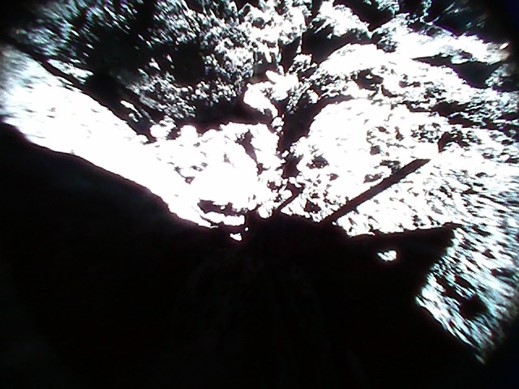You are using an out of date browser. It may not display this or other websites correctly.
You should upgrade or use an alternative browser.
You should upgrade or use an alternative browser.
Science!
- Thread starter Natalie
- Start date
I don't know much about Ghanaian rhythms but as I've understood music history broadly, European music developed chords whereas music from the Middle East was more about melodies, and music from sub-Saharan Africa had intricate rhythm sections. Understandable then that academics from Europe would have a hard time transcribing Ghanaian rhythms correctly...and it highlights the problem with knowledge passing through the lens of a limited (privileged) few.
D
Deleted member 7164
Guest
Now you two are just making excuses for unacceptable attitude. As a scientist, first you need to objectively assess your limits. I won't deal with quantum algorithms because it's out of my territory. Simple as that.
These are simple assholes and academia is full of them. If a society has 10% of people with higher education, that doesn't mean standard distribution is out - you're going to have pathological liars, egomaniacs, narcissists, etc. in that group also.
That's why Jazz says don't put'em on a pedestal, before you actually verify the authenticity of an author. Author's academic degree should give you a green light to read the work in the first place, but you shouldn't turn off your critical thinking brain centre yet.
These are simple assholes and academia is full of them. If a society has 10% of people with higher education, that doesn't mean standard distribution is out - you're going to have pathological liars, egomaniacs, narcissists, etc. in that group also.
That's why Jazz says don't put'em on a pedestal, before you actually verify the authenticity of an author. Author's academic degree should give you a green light to read the work in the first place, but you shouldn't turn off your critical thinking brain centre yet.
Now you two are just making excuses for unacceptable attitude. As a scientist, first you need to objectively assess your limits. I won't deal with quantum algorithms because it's out of my territory. Simple as that.
These are simple assholes and academia is full of them. If a society has 10% of people with higher education, that doesn't mean standard distribution is out - you're going to have pathological liars, egomaniacs, narcissists, etc. in that group also.
That's why Jazz says don't put'em on a pedestal, before you actually verify the authenticity of an author. Author's academic degree should give you a green light to read the work in the first place, but you shouldn't turn off your critical thinking brain centre yet.
I don't know anything about these academics and yeah, they probably were racist assholes just based on timeframe. But (a) that's not hugely constructive and (b) we actually don't know that they were asshats...although the question of whether they should get the benefit of the doubt is another.
D
Deleted member 7164
Guest
What is not hugely constuctive, my post? Are you aware that the point of my post is 'destructiveness' that these scientists really do while using wrong approach against the subject matter and the scientific process itself?
Forostar
Ancient Mariner
It's pretty cool too for tourists (taking pictures). *click*Well climate change is bogus because everyone knows if ice melts sea is going to be cooler.
150ft iceberg, which dwarfs nearby town of Ferryland, becomes tourist attraction as number of icebergs moving into North Atlantic shipping lanes spikes
... A towering iceberg is causing traffic jams in a remote town on Canada’s east coast, as tourists jostle for a glimpse of the mass of ice sitting in shallow water just off Newfoundland.
The iceberg, which has dwarfed the nearby small town of Ferryland, is estimated to measure some 46 metres (150ft) at its highest point. ...

D
Deleted member 7164
Guest
I actually wanted to post some reference before I even clicked. One off proper Maiden England should be done there.
Forostar
Ancient Mariner
We do not have a Climate Change Topic. Meanwhile, this can be here I guess:
The Dutch Have Solutions to Rising Seas. The World Is Watching.

In the waterlogged Netherlands, climate change is considered neither a hypothetical nor a drag on the economy. Instead, it’s an opportunity.
Read on
The Dutch Have Solutions to Rising Seas. The World Is Watching.

In the waterlogged Netherlands, climate change is considered neither a hypothetical nor a drag on the economy. Instead, it’s an opportunity.
Read on
Forostar
Ancient Mariner
So, Saudi Arabia became the first country to give a robot citizenship. Attempting to promote Saudi Arabia as a place to develop artificial intelligence – and, presumably, allow it to become a full citizen. Unfortunately the same rights aren't afforded to many humans in the country.
I've seen this before...So, Saudi Arabia became the first country to give a robot citizenship. Attempting to promote Saudi Arabia as a place to develop artificial intelligence – and, presumably, allow it to become a full citizen. Unfortunately the same rights aren't afforded to many humans in the country.
Forostar
Ancient Mariner

Prehistoric, Dinosaur-Era Shark With Insane Teeth Found Swimming Off Coast of Portugal
(more links in article)
The rare frilled shark is considered a “living fossil” because evidence of its existence dates back to at least 80 million years ago. This summer, researchers found one alive and thriving off the coast of Portugal, uncovering more clues about the resilience of this ancient sea creature.
The researchers who discovered the shark off the Algarve coast were working on a European Union project in the area, the BBC reported. The goal of the project was to "minimize unwanted catches in commercial fishing," the researchers told SIC Noticisas TV, as the BBC noted, but the team unknowingly unearthed one of the rarest and most ancient animals on the planet.
Scientists believe the frilled shark has remained the same, both inside and out, since the Cretaceous Period, when the Tyrannosaurus rex and Triceratops still roamed the planet. The creature, known by scientists as Chlamydoselachus anguineus, is incredibly simple and unevolved, most likely due to the lack of nutrients found in its deep-sea dwellings. A Japanese study of the shark found in Suruga Bay, Japan, revealed that its diet is 61 percent cephalopods—the class to which squids and octopus belong.

This fish is rarely seen by humans but has lived on the Earth since long before man. Awashima Marine Park/Getty Images
This deep-sea dweller is usually found between 390 and 4,200 feet below the surface, which is why it’s rarely seen and wasn’t even discovered before the 19th century (despite being around long before humans).
The shark caught this summer measured around 5 feet in length, but at their longest, they can be around 6-and-a-half feet, IFL Science reported. Another study of a Suruga Bay inhabitant showed that frilled sharks may also have the longest gestation period of any living creature, 42 months.
Its name may sound unfitting for a beast that swims the deep seas, but as Mental Floss explained, the frilled shark is named after its gills. Pretty much all other sharks have separate gills, but the frilled shark’s first pair of gills stretch all the way across its throat. In total, the shark has six pairs of gills that have “frilly” edges.

The shark also has a unique mouth shape. Its jaw has more than 300 teeth neatly lined in 25 rows that, according to professor Margarida Castro of the University of the Algarve, are specifically designed to help it “to trap squid, fish and other sharks in sudden lunges,” The Portugal News reported. It’s lined with spines called dermal denticles that, combined with the teeth, give the mouth an all-around frightening look.
It’s unlikely you will ever come face-to-face with a living frilled shark. But if you do, it’s safe to say: Keep as far away as you can, and whatever you do, try to avoid its ferociously awesome jaw.
Forostar
Ancient Mariner
Eastern Africa is splitting from the rest of the continent in a geological event that will occur in millions of years, eventually leaving Africa without its horn.
It's happening quicker than anyone thought as well - although it's worth pointing out that when we say 'quick' we are talking in geological terms, which means within a few million years.
Whilst it's unlikely to suddenly break off and fall into the Indian Ocean next Thursday, it is already causing consequences. ...

http://www.geologyin.com/2018/03/the-african-continent-is-splitting-in.html#w0o94ZHjbyxXdo2b.99
It's happening quicker than anyone thought as well - although it's worth pointing out that when we say 'quick' we are talking in geological terms, which means within a few million years.
Whilst it's unlikely to suddenly break off and fall into the Indian Ocean next Thursday, it is already causing consequences. ...

http://www.geologyin.com/2018/03/the-african-continent-is-splitting-in.html#w0o94ZHjbyxXdo2b.99
Crikey.
Forostar
Ancient Mariner
It's ur anus after all.
http://www.iflscience.com/space/study-reveals-uranus-smells-of-farts/
http://www.iflscience.com/space/study-reveals-uranus-smells-of-farts/
Uranus, the first planet discovered in modern times, has the poetic name of the Greek god of the heavens. In the English language, it is, unfortunately, the literal butt of every astronomy joke and I’m afraid that this latest discovery will make things worse. ....
Troodon'sTooth
Is Futureal Real?
We will actually have some much more immediate problems then. At around 5 billion years from now, the sun will be finished burning the hydrogen in its core, and the core will shrink. All that energy will cause the outer layers to exapand, turning it into a red giant star. This will toast the Earth to lava planet similar to Mustafar in Star Wars, except a f**k of a lot hotter. Between around 6 to 8 billion years, the sun will shrink back down into a subgiant star, but will inflate into a second, even larger red giant, that will obliterate the Earth inside the solar atmospherehttp://www.bbc.co.uk/news/science-environment-18285583
The pictures in this are way cool. Also, its funny how the concept of "6 billion years from now" is so hard for us humans to grasp that scientists actually feel the need to say that there's no need to take out insurance for the coming merger of our galaxy with Andromeda. I mean, in all likelihood in 6 billion years we won't be around, period.
D
Deleted member 7164
Guest



Ancient Egyptian AutoCAD at work
D
Deleted member 7164
Guest
Japanese Hayabusa 2 mission, images from asteroid Ryugu
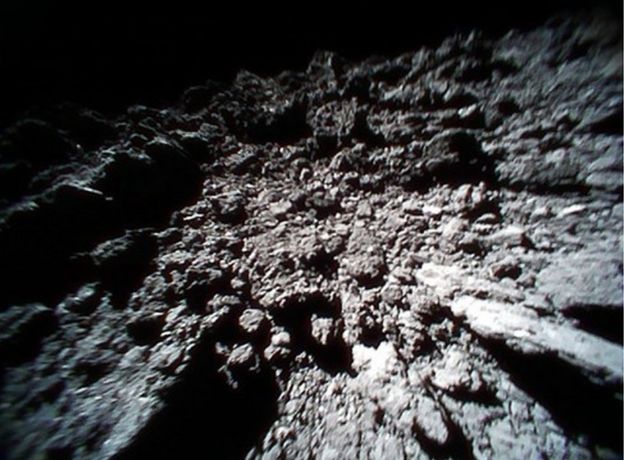



D
Deleted member 7164
Guest
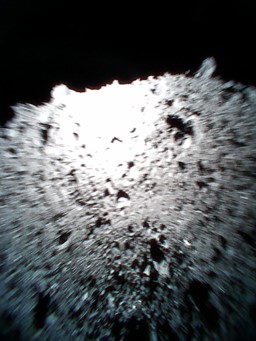
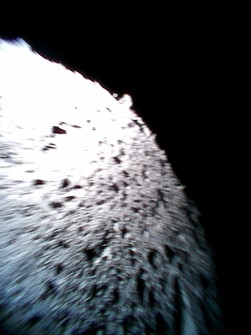
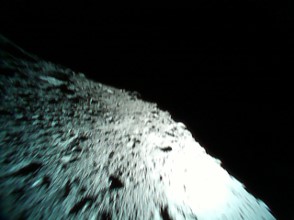
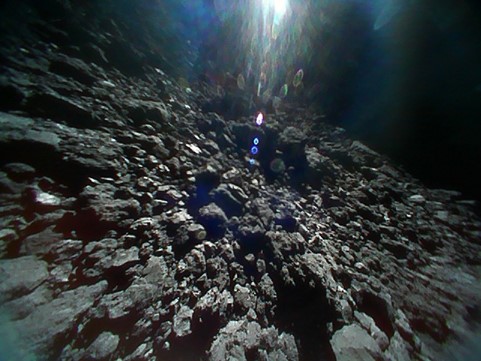
Rover's own shadow
